Sierra Leone

The STOP Spillover Sierra Leone office opened in April 2022. The STOP Spillover team worked in Kenema district in the eastern region of the country (see map below). Activities focused on the wildlife-human interface in rural, forest edge communities around Gola Rainforest National Park, to improve understanding of the risk factors for viral zoonotic disease spillover and to develop interventions to reduce human exposure to wildlife, including rodents. The Kenema district borders Liberia and is known for significant wildlife populations, a thriving wild meat market, and a history of viral disease outbreaks, including endemic Lassa fever and Ebola virus outbreaks from 2014 to 2017.
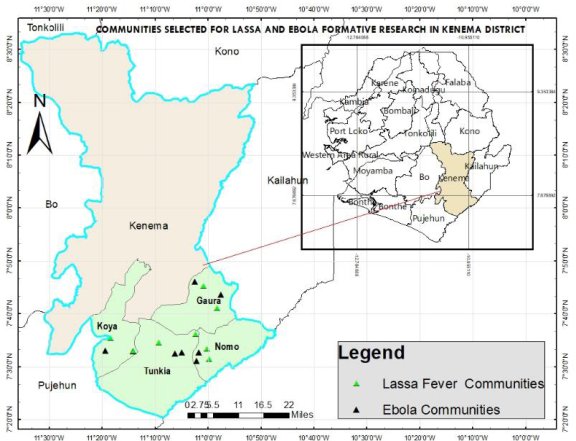
The STOP Spillover team worked in close collaboration with local stakeholders, including the Kenema District Health Management Team, the Kenema City Council, the Ministry of Health and Sanitation, the Ministry of Agriculture and Food Security, the Ministry of Environment and Climate Change, the Environmental Protection Agency, the One Health Secretariat, and the Gola Forest Program. All STOP Spillover activities and interventions were implemented in collaboration with One Health Design, Research, and Mentoring (OH-DReaM) working group members, including local government and key stakeholders. Project activities in Sierra Leone concluded on September 30, 2024.
From its inception, STOP Spillover worked with stakeholders in Kenema district to gain a better understanding of the historical context of wildlife-human interactions and wildlife uses in the community. A range of participatory tools was employed, including outcome mapping, focus group discussions, key informant interviews, direct observations, transect walks, willingness to pay studies, and wildlife value chain mapping. The uses of wildlife, beliefs about wildlife (including rats), and the perceived values of wildlife and rats varied across the diverse communities in Kenema district.
STOP Spillover’s work in Sierra Leone has documented and defined the diverse and ongoing wildlife-human interactions in this high-risk interface for viral zoonotic spillover, and initiated monitoring and risk reduction interventions that continue in partnership with communities and other stakeholders.
In partnership with local stakeholders, the STOP Spillover Sierra Leone team also developed and implemented the first ever chiefdom level, community-based spillover simulation program that can be used to identify, analyze, and take action to prevent the amplification and spread of zoonotic diseases when they occur to reduce potential spillover risks. All of these activities included risk communication components. Robust social and behavior change communication efforts accompanied all STOP Spillover activities and interventions.
STOP Spillover focused intensively on localization and local capacity strengthening. As a result of STOP Spillover interventions and how they were co-created with and implemented by local stakeholders, local capacity to design, deliver, and evaluate One Health interventions improved. The STOP Spillover Sierra Leone Country Team collaborated with local universities, One Health partners, and agriculture and environment stakeholders in all stages of project implementation and evaluation.
Key Activities in STOP Spillover's Work in Sierra Leone
1. Outcome mapping
Outcome Mapping (OM) is a structured participatory tool that uses a bottom-up collaborative process to engage all critical stakeholders (both traditional and non-traditional). In OM, stakeholders drive the change and own the process, building self-reliance and sustainability. Through the OM process, stakeholders are able to map their outcomes and work with critical partners to identify, design, and implement interventions to address spillover. The OM process focuses on effecting changes in behavior, relationships, actions, and activities in the people, groups, and organizations that will lead to stopping spillover. Through OM, stakeholders identify key project outputs, outcomes, and impacts to achieve over the expected life of a project.
In May 2022, the STOP Spillover Sierra Leone Country Team conducted participatory outcome mapping exercises with national level stakeholders in Freetown to focus project activities on priority interfaces and viral spillover threats. The workshop and launch event resulted in the identification of the wild meat value chain in Kenema district and Ebola, Marburg, and other filoviruses as a priority interface. Because of the double threat of Lassa virus and Filoviruses in forest edge communities in eastern Sierra Leone, it was decided to explore both kinds of viral hemorrhagic fever spillover risks in this common interface. The national level outcome mapping workshop was followed by district and community level outcome mapping exercises, which informed the design of the project’s initial work plan.
2. Risk framing workshop
With support from the University of Washington, in July 2022 the STOP Spillover Sierra Leone Country Team organized a risk framing workshop with local stakeholders in Kenema district. The purpose of the workshop was to develop a risk framework for STOP Spillover activities. The workshop featured the Joint Risk Assessment (JRA) Operational Tool to ensure a common vision across project stakeholders during project implementation. The JRA provides guidance for how to apply and manage a One Health joint qualitative risk assessment process, inclusive of human health, animal health, and the environment, in collaboration with multiple government agencies. The workshop included group discussions and sharing of potential risk reduction activities for zoonotic spillover. Two risk frameworks were developed, one for Lassa virus and one for Ebola virus.
3. Ebola and Lassa social behavior change approaches and lessons learned workshop
Prior to implementing formative research on Lassa and Filovirus spillover knowledge, attitudes, beliefs, and practices, the STOP Spillover team conducted a review of existing information, education, and communication (IEC) materials and social and behavior change (SBC) approaches, in collaboration with national and local stakeholders in Kenema district. Findings from the review included a list of what worked well in previous efforts and what did not work well. Key recommendations included strengthening collaboration and information sharing between One Health partners (health, agriculture, and the environment), leveraging successful approaches (e.g., community engagement, local language jingles, culturally and contextually appropriate communication channels), and avoiding written SBC materials that are less effective in community settings.
4. Formative research related to Lassa virus knowledge, attitudes, practices, beliefs and behaviors
To inform the design of interventions in communities in the high risk interface of Kenema district, the STOP Spillover team and One Health Design, Research, and Mentoring (OH-DReaM) working group members conducted formative research focused on local knowledge, attitudes, practices, beliefs, and behaviors related to Lassa virus. The research included key informant interviews, focus group discussions, and direct observations. Findings were used to design interventions to reduce Lassa spillover risks, and to develop social and behavior change (SBC) approaches to support intervention success.
Research findings revealed that many adult community members (both male and female) were aware that rats are a reservoir for Lassa fever. However, some focus group participants said that although they had heard about Lassa fever, they did not know about its causes, symptoms, and sources of transmission as there had been no cases in their community. Findings from this research informed the design of personas that the STOP Spillover team used to develop an SBC strategy and tools to support the adoption of behaviors to reduce Lassa spillover risks in target communities.
5. Formative research related to the wild meat value chain and Ebola virus knowledge, attitudes, practices, beliefs, and behaviors
The STOP Spillover Sierra Leone Country Team and OH-DReaM working group members also conducted formative research on local knowledge, attitudes, practices, beliefs, and behaviors related to Ebola virus and other filoviruses. Findings were used to design interventions to reduce filovirus spillover risks and to develop SBC approaches to support intervention success.
Research findings revealed that most community members were aware of and knowledgeable about Ebola virus. Community members mentioned preventive measures they could use to protect themselves from diseases like Ebola, including using personal protective equipment (PPE) and hand washing with soap when handling wild meat, but they said these practices are not common because of the lack of availability of PPE.
6. Lassa risk reduction strategy and action plan, intervention selection process, and procedures for implementation and evaluation
Using results from formative research, STOP Spillover staff, OH-DReaM working group members, and community stakeholders developed a Lassa risk reduction strategy and action plan, which included improved grain storage techniques (e.g., testing the use of plastic drums and wooden boxes for all stored grains) and improved community hygiene practices (e.g., testing community by-laws, regular clean up days, trash pits).
7. Wild meat market strategy and action plan, intervention selection process, and procedures for implementation and evaluation
Using results from the formative research, STOP Spillover staff, OH-DReaM working group members, and community stakeholders developed a filovirus risk reduction strategy and action plan for the Kenema wild meat market, which included the use of PPE, improved hygiene practices (e.g., a soak-away pit, butcher block, handwashing with soap), market by-laws, and SBC communication activities (e.g., Bluetooth jingles, peer support).
8. Scenario development for outbreak risk management
The STOP Spillover team developed a simulation workshop agenda and action plan focusing on outbreak risk management at the interface (chiefdom) level. The scenarios, the first of its kind implemented at the local level in Sierra Leone, addressed local level responses, with links to existing national systems and coordination with human, environmental, and animal health. The University of Nebraska Medical Center provided technical advice on design, planning, and technical content and assisted with adapting the outbreak risk management scenario into a workshop tabletop simulation event at the high-risk interface. In partnership with the Ministry of Health and Sanitation and the One Health platform, the STOP Spillover Sierra Leone Country Team convened, coordinated, and conducted five chiefdom level workshops, engaging national, district, and local stakeholders. The team also produced workshop reports with recommendations and potential next steps for improved outbreak risk management readiness at the interface level. The recommendations addressed such issues as patient isolation, referral, and treatment; sample collection, testing, and turnaround time; community sensitization about the transmission of viral hemorrhagic fevers; and community-based surveillance to enhance early case detection.
9. Building media capacity for risk communication and media-based interventions by partnering with local stakeholders
The Internews Earth Journalism Network issued a call for proposals from media organizations and networks and funded applications to strengthen the capacity of local journalists and communicators to spread timely and accurate news and information about zoonotic spillover and how to prevent it. Internews and STOP Spillover consortium partners held webinars for 50 journalists on key issues related to zoonotic spillover and how to cover them. Participants joined a network of journalists with whom STOP Spillover interacted for ongoing media development activities, including how to distill scientific information for the general public in different formats (from broadcast to visual storytelling) and how to manage effective crisis and risk communication and address disinformation.
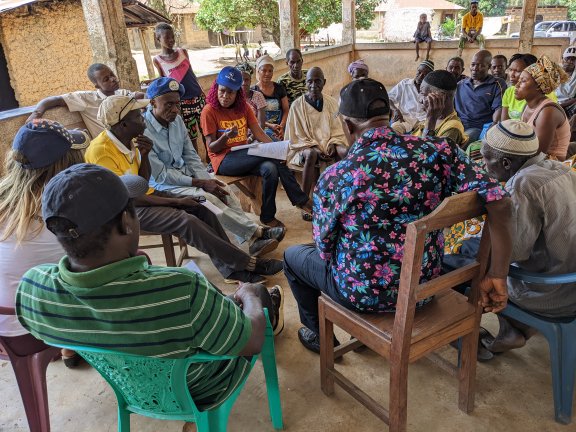
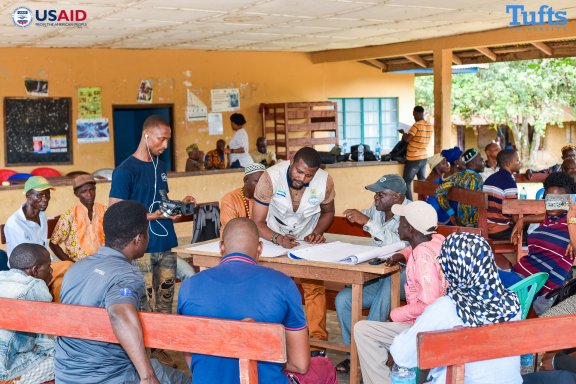
Read About STOP Spillover in Sierra Leone
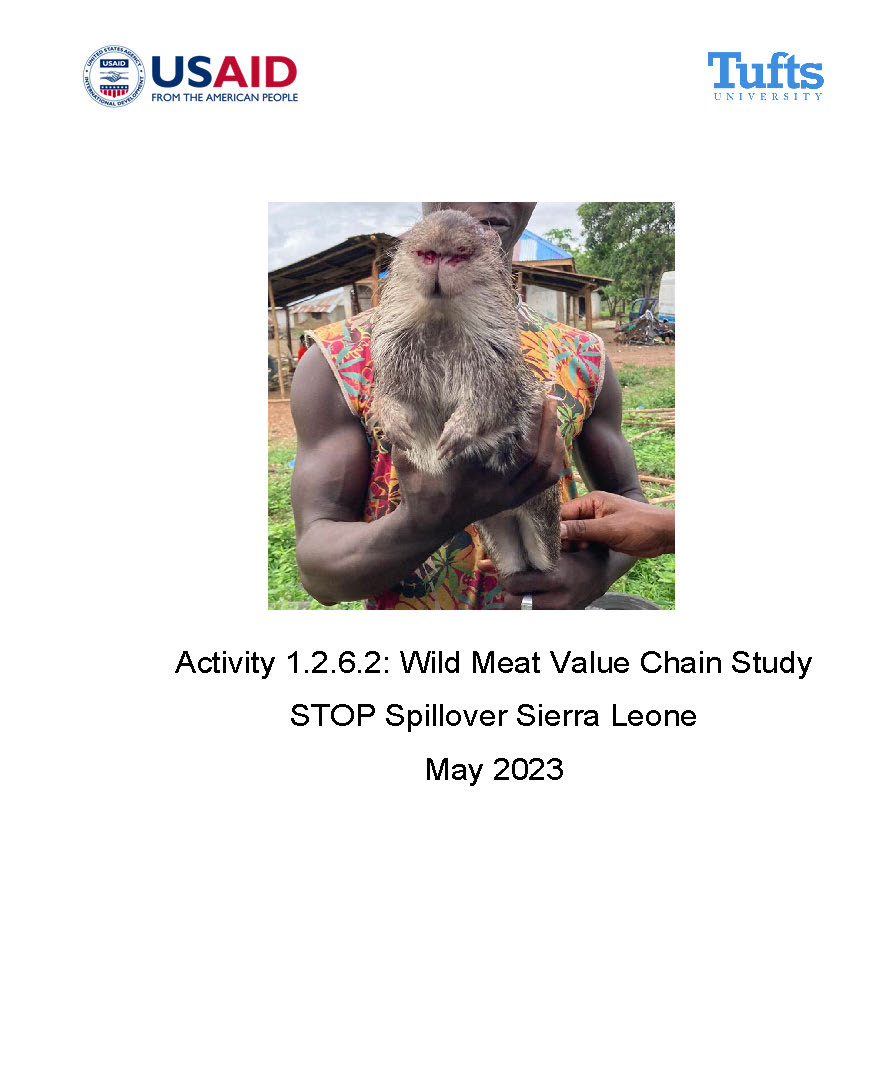
This report describes a study by the STOP Spillover Sierra Leone Country Team to identify critical control points along the wild meat value chain in Kenema District, social drivers and determinants of wildlife hunting and consumption, and behaviors of value chain actors that may be associated with an increased risk of zoonotic spillover.
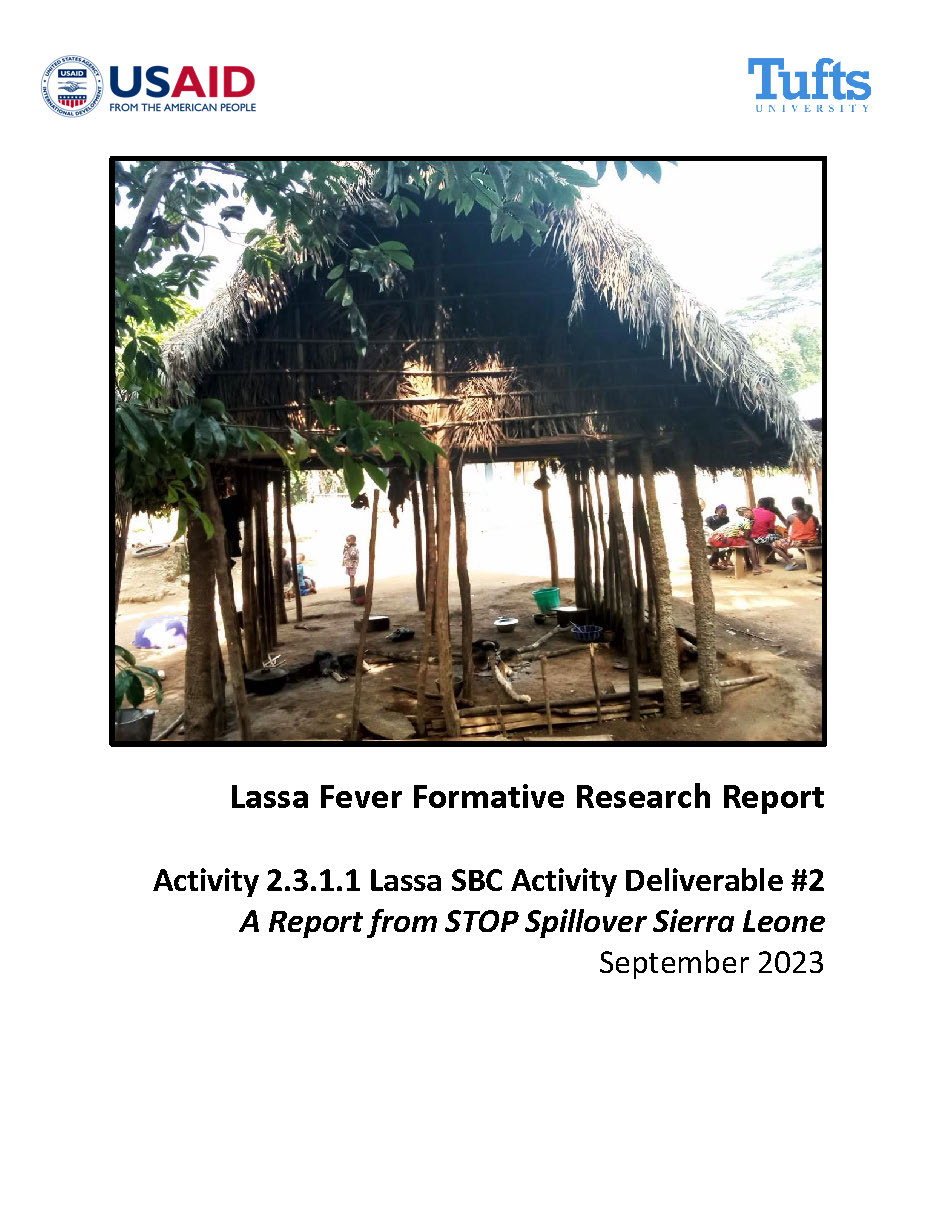
Lassa Fever Formative Research Report
This report summarizes formative research on the influencing factors (i.e., the political, economic, cultural, and environmental factors) and social and gender norms that facilitate or impede behavior change related to reducing risk for Lassa virus transmission in Kenema District in Sierra Leone.
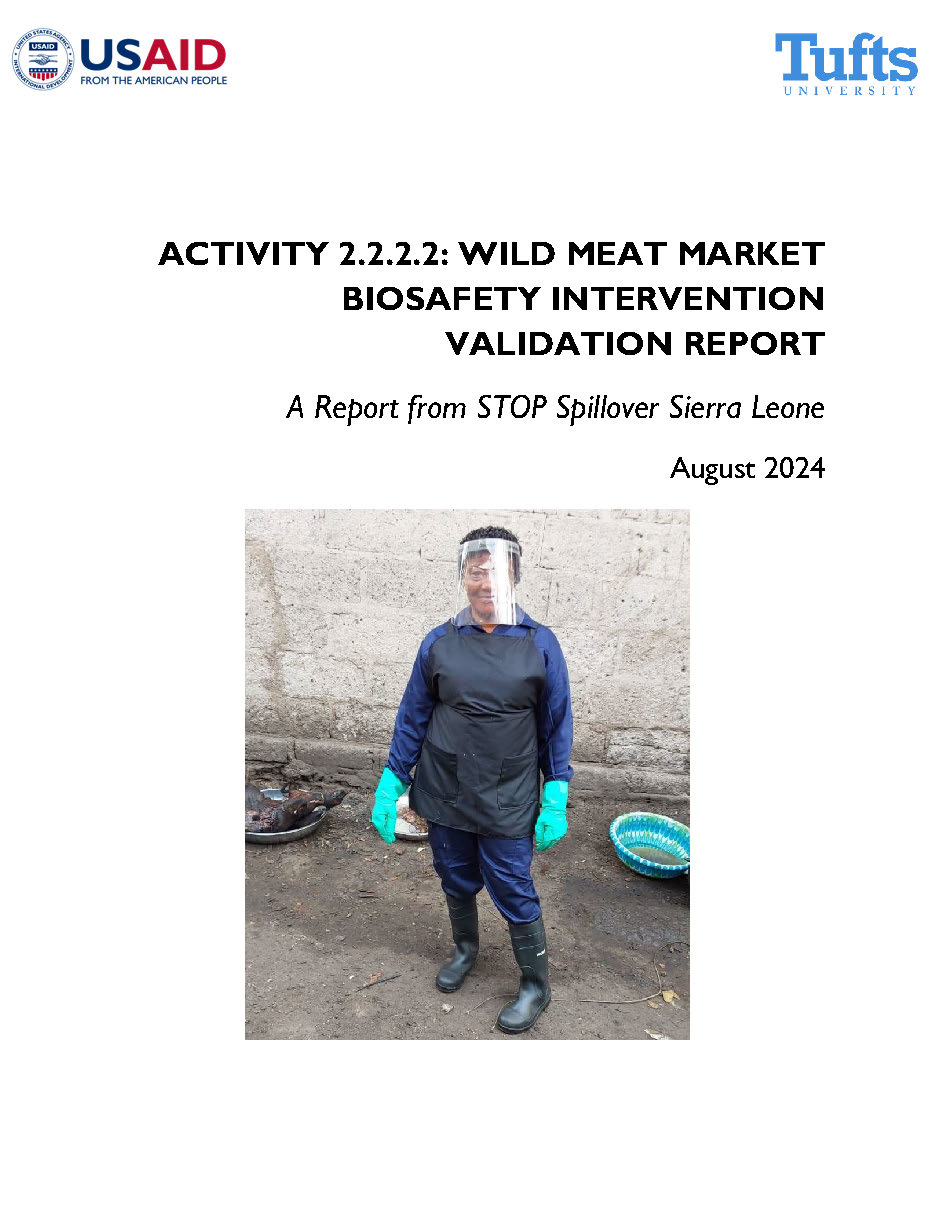
Wild Meat Market Biosafety Intervention Validation Report
This report summarizes a final validation exercise conducted by the STOP Spillover Sierra Leone Country Team in the Kingsway Corner Market in Kenema District. The exercise focused on identifying key factors influencing the adoption of co-designed risk reduction behaviors by wild meat traders and processors in the market.
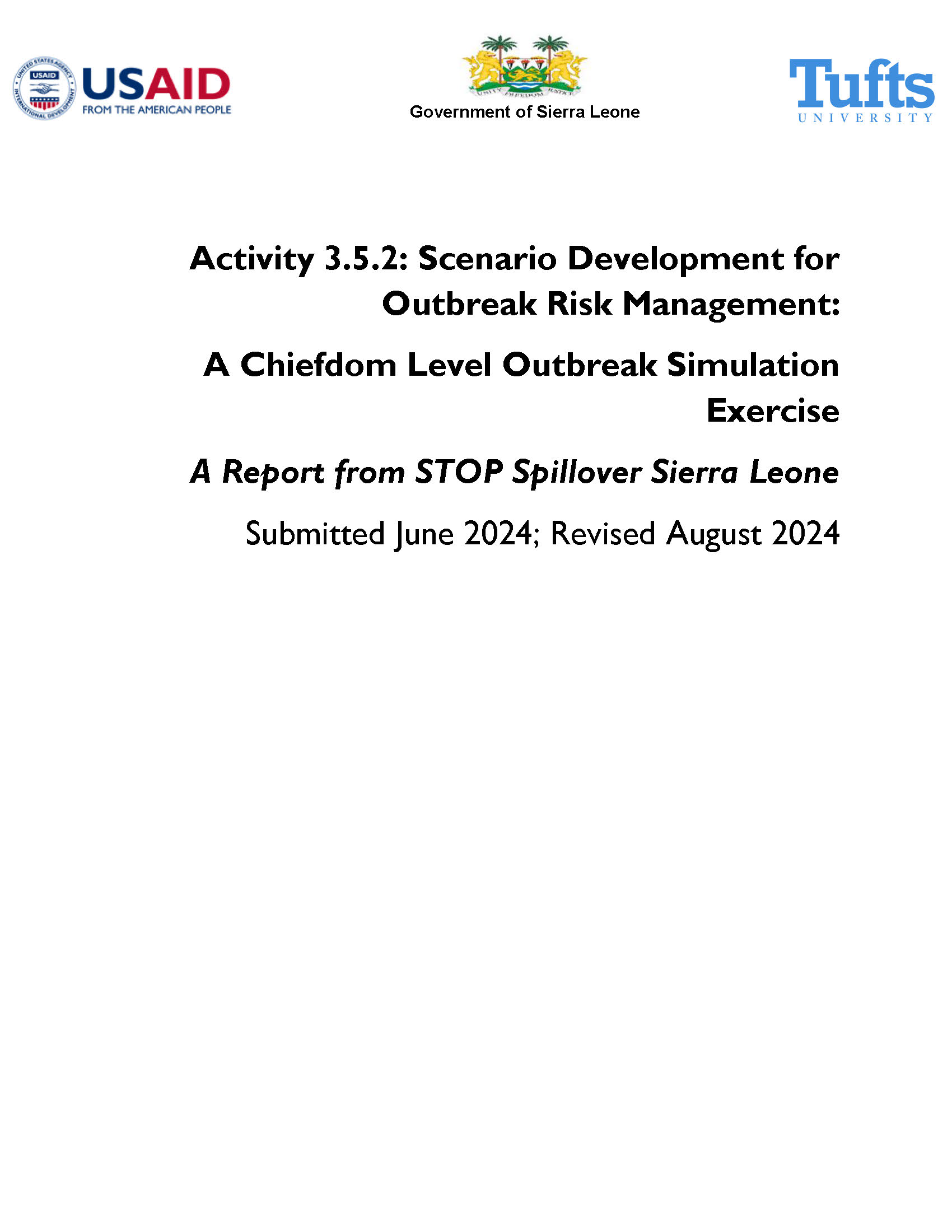
Scenario Development for Outbreak Risk Management: A Chiefdom Level Outbreak Simulation Exercise
This report summarizes a tabletop simulation exercise developed by STOP Spillover to test community-level response preparedness for viral hemorrhagic fever (VHF) outbreaks. The exercise was conducted in five chiefdoms in Kenema District in Sierra Leone to assess epidemic preparedness and readiness at a high-risk interface.
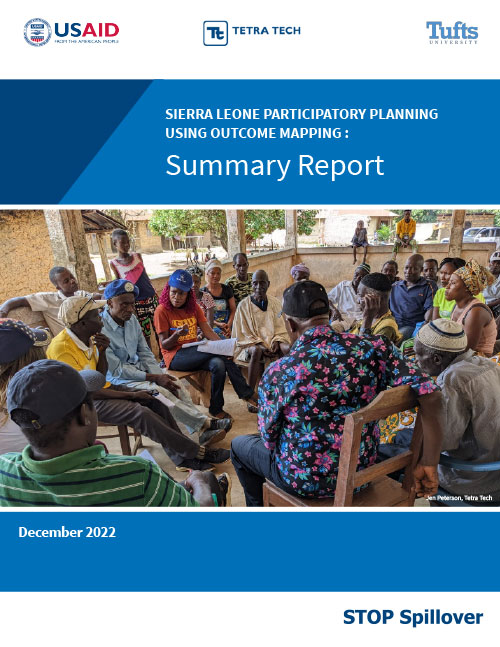
Sierra Leone Participatory Planning Using Outcome Mapping: Summary Report
Through outcome mapping (OM), a structured participatory tool that uses a collaborative context-specific process, spillover ecosystem stakeholders (both traditional and non-traditional) are empowered to identify and reduce zoonotic spillover risks at human-animal-environment interfaces and develop an outcome-oriented project action plan. This report outlines the details of the OM workshop activities in Sierra Leone.
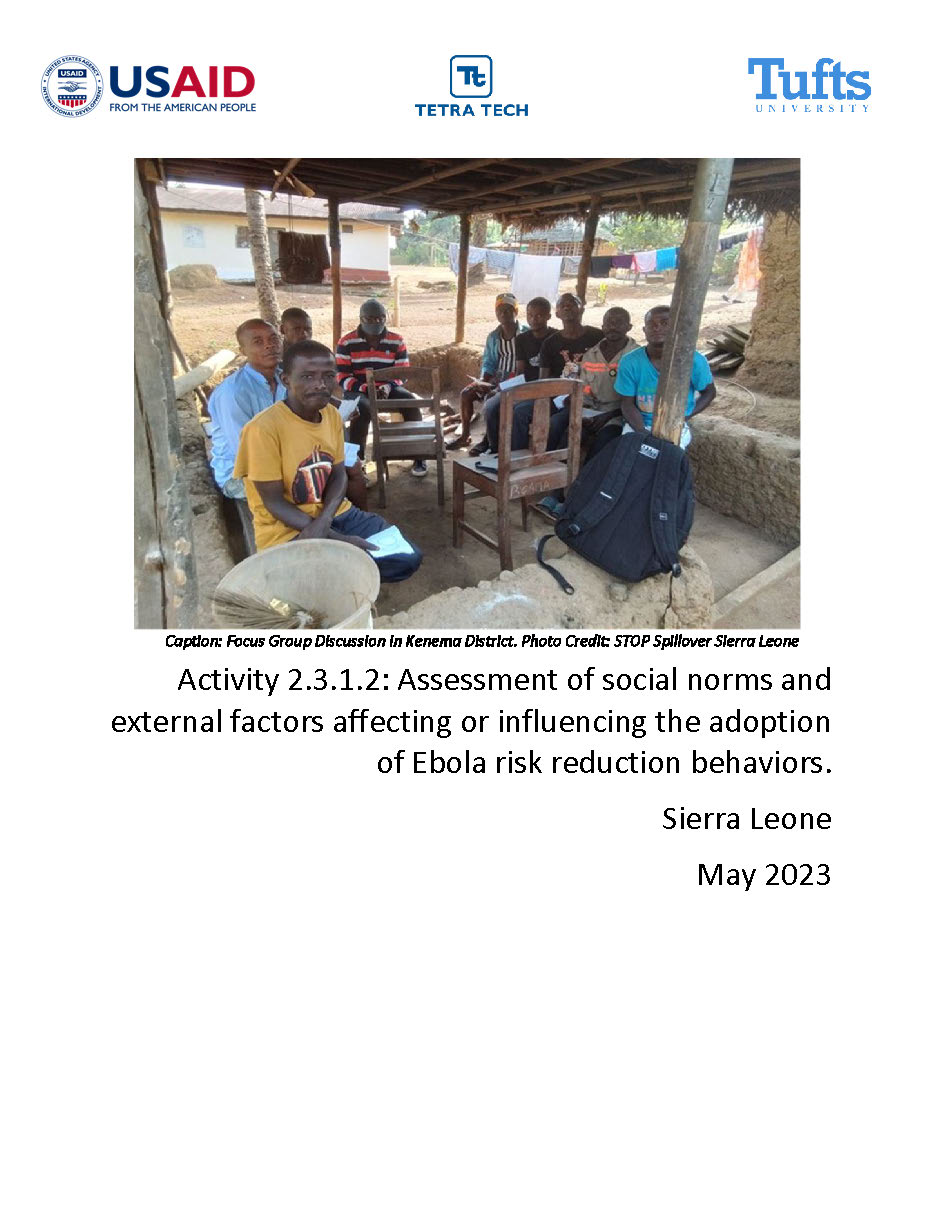
This report provides a summary of research findings on social norms and external factors that affect or influence the adoption of Ebola prevention behaviors in Kenema District, Sierra Leone. Some of the factors studied included local knowledge of Ebola infection, Ebola prevention measures, and cultural norms, social norms, and practices that influence risk.
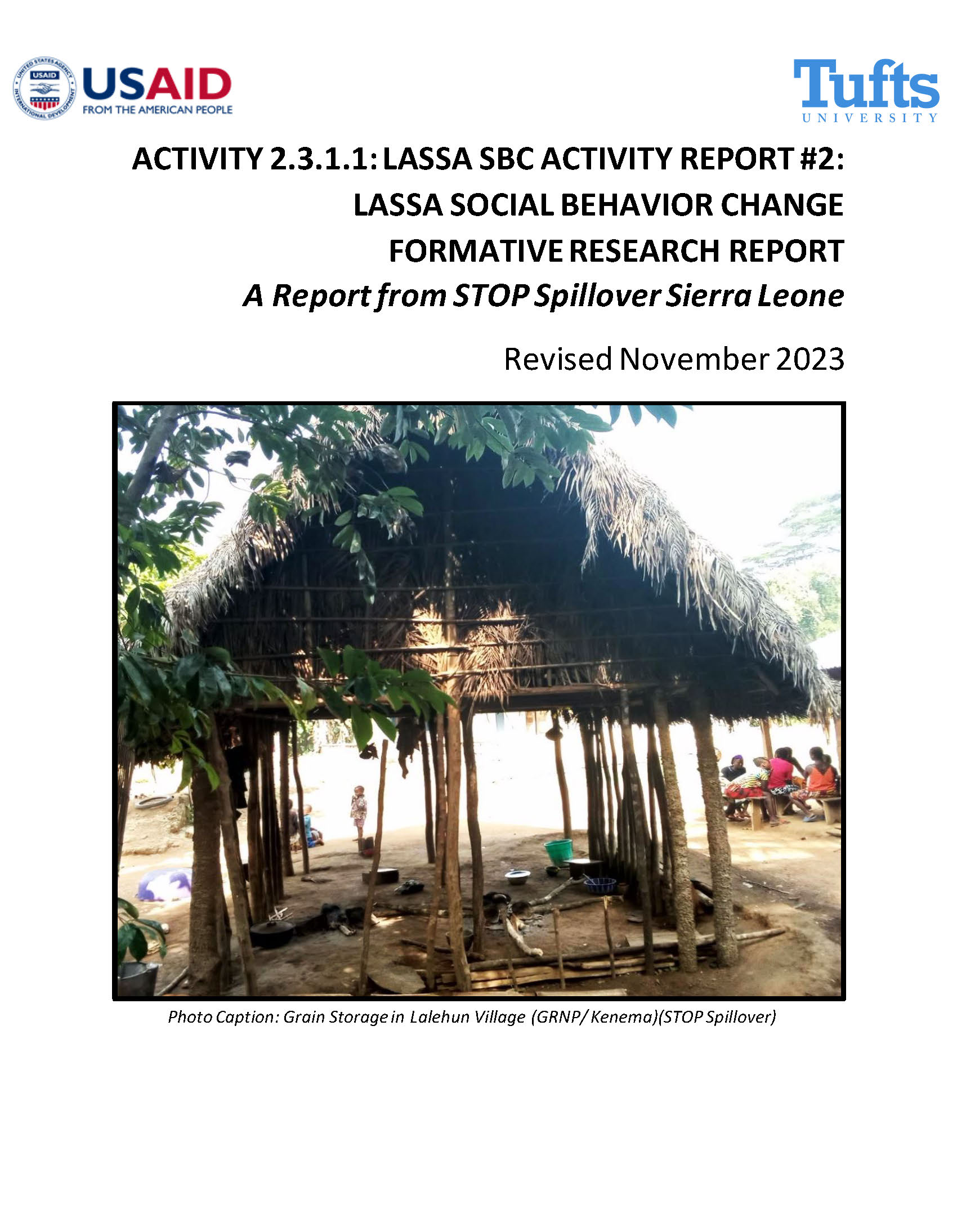
Lassa Social Behavior Change Formative Research Report
This report summarizes research findings on social norms and behaviors that affect or influence Lassa virus spillover risks in Kenema District, Sierra Leone, including local practices, beliefs, and social norms; populations and groups at high risk for Lassa spillover; traditional cultural norms, beliefs, and practices that influence spillover risk; and trusted sources of information.